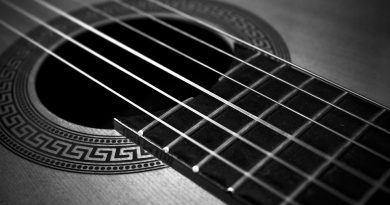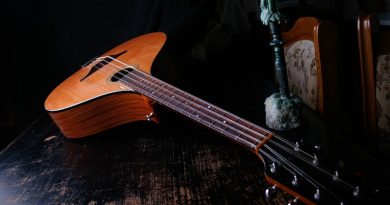Mastering the Art of Tone Shaping: Guitar Tips for Creating Your Perfect Sound
Mastering the Art of Tone Shaping: Guitar Tips for Creating Your Perfect Sound
As a guitarist, one of the most crucial elements in creating your unique sound is mastering the art of tone shaping. The tone of your guitar is like your musical fingerprint – it sets you apart from other players and helps define your style. In this article, we will explore some tips and techniques for shaping your guitar’s tone to create your perfect sound.
Understanding the Basics of Tone
Before we dive into specific tips for tone shaping, it’s important to understand the basics of tone and how it is produced on a guitar. Tone is a combination of various factors, including the type of guitar you’re playing, the pickups, the strings, the amplifier, and even the playing technique. Each of these elements contributes to the overall sound that your guitar produces.
Different guitars and pickups will naturally have different tonal characteristics. For example, a single-coil pickup will produce a brighter and more twangy sound, while a humbucker pickup will have a warmer and thicker tone. Experimenting with different guitars and pickups can help you find the right combination for your desired sound.
Tips for Tone Shaping
Now that you have a basic understanding of tone production on the guitar, let’s explore some tips for shaping your tone to create your perfect sound.
1. Experiment with Different Pickups and Settings
One of the easiest ways to shape your guitar’s tone is by experimenting with different pickups and settings on your guitar and amplifier. Try switching between the bridge and neck pickups to hear the differences in tone. You can also adjust the tone and volume knobs on your guitar to find the sweet spot that works for you.
On your amplifier, try tweaking the EQ settings to dial in the desired amount of bass, midrange, and treble. Additionally, some amplifiers have built-in effects like reverb, delay, and distortion that can further enhance your tone. Experiment with these settings to find the sound that resonates with you.
2. Use Effects Pedals
Effects pedals are a popular tool for guitarists looking to shape their tone. Pedals like overdrive, distortion, chorus, and delay can add texture and color to your sound. Experiment with different pedals to find the ones that complement your playing style and enhance your tone.
When using effects pedals, it’s important to remember that less is often more. Too many effects can muddy your tone and detract from the clarity of your playing. Start with a few essential pedals and build from there based on your musical preferences.
3. Pay Attention to your Playing Technique
Your playing technique also plays a significant role in shaping your guitar’s tone. Factors like pick attack, fingerstyle playing, and bending can all affect the sound that you produce. Experiment with different techniques to see how they influence your tone and adjust accordingly.
For example, playing closer to the bridge will give you a brighter and twangier sound, while playing closer to the neck will produce a warmer and fuller tone. Pay attention to these subtleties in your playing and use them to your advantage when shaping your tone.
4. Experiment with Different Strings
The type of strings you use can also impact your guitar’s tone. Different materials like nickel, steel, and bronze will produce varying tonal qualities. Additionally, different gauges will affect the tension and feel of the strings, which can influence how you play.
Experiment with different string materials and gauges to find the ones that work best for your playing style. You may find that a particular type of string enhances your tone and improves your overall sound.
5. Practice and Listen
Above all, the key to mastering the art of tone shaping is practice and listening. Spend time experimenting with different techniques, settings, and equipment to find the sound that resonates with you. Additionally, listen to your favorite guitarists and study how they shape their tone. Pay attention to the nuances in their playing and try to incorporate some of these techniques into your own sound.
By continuously refining your tone and listening critically to your playing, you can develop a unique and personalized sound that sets you apart as a guitarist.
Conclusion
Mastering the art of tone shaping is a fundamental aspect of being a guitarist. By understanding the basics of tone production and experimenting with different techniques and equipment, you can create your perfect sound. Remember that tone is a personal and subjective element of music, so don’t be afraid to take risks and explore new possibilities. With practice and patience, you can develop a tone that is uniquely yours and helps define your musical identity.






